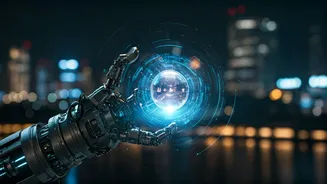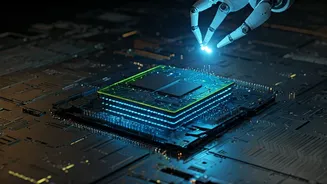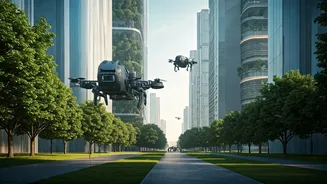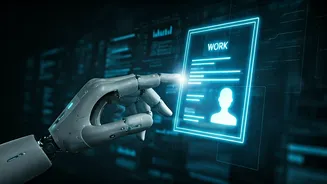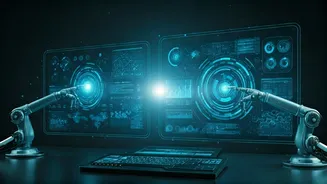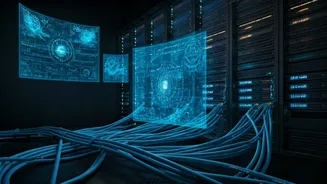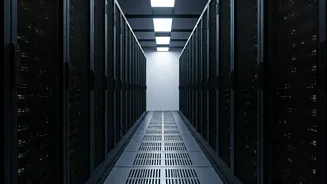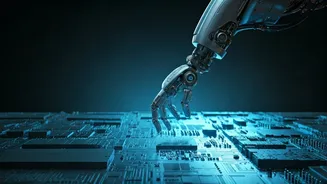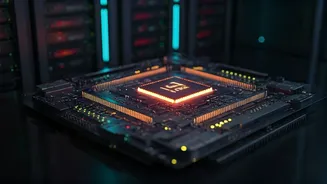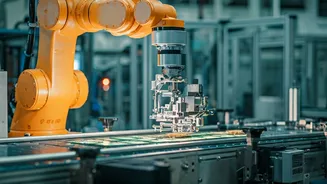Understanding Creative Destruction
The term 'creative destruction' isn't new; it's a concept that originated from the economist Joseph Schumpeter. In this context, it signifies how new technological
advancements and innovations disrupt existing markets and business models. Peter Howitt, echoing Schumpeter's theory, suggests that AI will catalyze this process on an unprecedented scale. AI's capabilities, from automating tasks to generating novel solutions, enable companies to optimize their operations and create superior products, therefore making older methods obsolete. This relentless cycle of innovation, where the new supersedes the old, is what drives economic progress, creating not only new opportunities but also some inevitable shifts in the job market and business landscape. It is a fundamental feature of a dynamic economy.
AI’s Disruptive Power
Artificial intelligence presents a powerful force capable of inducing substantial disruptions across various sectors. The capacity of AI to automate complex processes, analyze vast datasets, and provide insights inaccessible to humans fuels this disruptive potential. For instance, in manufacturing, AI can optimize production lines, enhance efficiency, and reduce operational costs. Similarly, in healthcare, AI can accelerate drug discovery, improve diagnostics, and personalize patient care. However, such advancements also give rise to concerns. As AI systems become more adept, they could potentially displace human workers from existing jobs, demanding the re-skilling or up-skilling of the workforce to accommodate the new reality. Howitt points out that this is not necessarily negative; instead, it is a driver of progress, compelling society to adapt.
Economic Implications of AI
The economic implications of AI-driven creative destruction are complex, encompassing both significant benefits and considerable challenges. One of the main advantages is the possibility of boosted productivity. AI-powered automation can enable companies to produce more goods and services with fewer resources, thereby reducing costs and escalating economic output. Also, AI can stimulate innovation by supporting researchers and developers with new tools and insights. The use of AI can also open avenues for the creation of new industries and job roles. Nonetheless, there are accompanying risks that need to be addressed. Job displacement is a major worry, as some existing roles could become redundant. Inequality could also be exacerbated, if the benefits of AI are not widely shared. Governments and policymakers have a critical role in addressing these problems, through strategies like investment in education and worker training, social safety nets, and regulatory frameworks that encourage fair competition and responsible technological deployment.
Societal Transformations Underway
The influence of AI is poised to trigger extensive societal transformations. Beyond its economic impacts, AI is reshaping how we work, interact, and live. The automation of routine tasks could lead to shifts in employment structures, requiring individuals to adjust and acquire novel skills. AI-powered systems are also changing the way we interact with technology, from virtual assistants to personalized recommendations. Furthermore, ethical considerations, such as bias in algorithms, privacy, and the responsible use of AI, are growing in importance. As AI increasingly influences crucial aspects of our lives, there is a mounting need to have open discussions regarding these issues, ensuring that AI is developed and applied in a way that aligns with human values and promotes social well-being. This requires collaboration among researchers, policymakers, and the public to establish guidelines and standards that guarantee responsible AI deployment.
Navigating the Future
Navigating the future shaped by AI demands a proactive and adaptable approach. Individuals and organizations must embrace continuous learning and adaptation to stay relevant in a rapidly evolving landscape. Investing in education and training programs that focus on skills like critical thinking, problem-solving, and creativity is essential. Policymakers should devise regulations that promote responsible AI development and deployment, which safeguards against potential risks while encouraging innovation. Additionally, a focus on ethics, transparency, and fairness in AI systems is crucial to build public trust and ensure that AI is a force for good. Collaboration and open communication among diverse stakeholders – including governments, industries, academics, and the public – will be critical to harness the full potential of AI while mitigating its negative effects. Only by working together can we create a future where AI serves the betterment of all.
